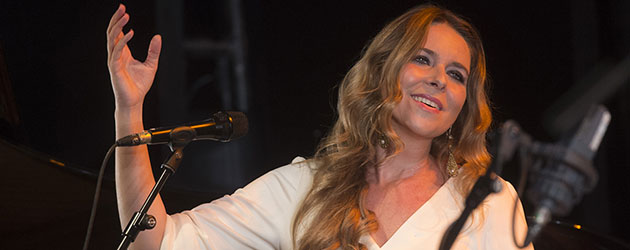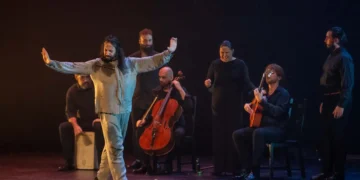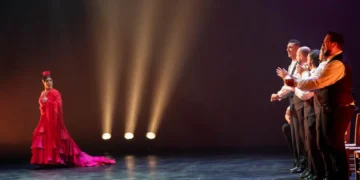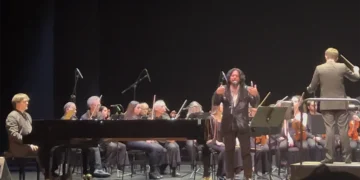José Manuel Gómez GUFI
Photos: David Mudarra
Suma Flamenca. Teatro Pavón Kamikaze.
Rocío Márquez, Cante. Proyecto Lorca, guitar. Daniel Borrego Marente, piano. Juan M Jiménez, saxos. Antonio Moreno, marimba, drums, percussion.
Contemporary musicians like to play their instruments backwards. Rocío came on singing a nana, and the pianist strummed a chord from the inside of the instrument while the percussionists played a great marimba with the unintended part. In other words, he didn’t use the stick, but its point. The saxophone player also did strange things; he hasn’t yet played his instrument backwards, but he’ll spend the evening seeking harmonics in the instrument.
That’s how contemporary people are: conceptual, strange and surprising, and they left us some discoveries from the twentieth century, and a few headaches as well (take your pick). Rocío says she met Proyecto Lorca when she saw Israel Galván in “Flaco.Men”, and took the trio to the Teatro Real to work on popular songs of Federico García Lorca. Rocío had included that live recording with her record “Firmamento” which is what she presents in this show.
One of the recurring myths of classical music is that the written score is untouchable, while all musicians of this background know there are thousands of ways to play written music properly (one per musician). So I invite modern musicians to publish their music full of little drawings in which you see the correct string inside the piano to be strummed, the backwards drumstick and the searching and finding of these musicians when they turn their instruments upside-down. I would remind contemporary flamencos that Israel Galván dances a piece of blank sheet music in “Flaco.Men”.
But who’s the guitarist?
Rocío Márquez sings flamenco, no doubt about it, and the older folks ask: “Who’s the guitarist?” In other words: “Who’s doing the job of the guitarist?”
This is where we have to recommend you buy the record, because conceptual issues are more for thinking than feeling, and for those of you who think the muscle of feeling is the heart, we can assure you the mind is the place where the heart checks things out.
Be that as it may, the record sounds great (production by Refree), and as far as thinking and learning, it’s a good idea to read the libretto (by Pedro G. Romero), although this is not absolutely necessary.
And in the theater, does it work or not?
Yes, it works, but there’s a long way to go, in other words…you see a splendid landscape but it needs to adjust live, to lose the fear that audiences with leave the theater wanting to burn churches and museums (said with the deepest respect for the artists, for “Guernica”, the cathedral of Burgos and all the rest).
For now, there is precision in the recorded work, what needs to be done is to raise it to ecstasy (with apologies to Saint Theresa and her psychotropic journeys).
The audience at the Pavón Kamikaze theater showed its enthusiasm for the show. There were dedications to the verses of Isabel Escudero (who was not able to see the record published), and to Christina Rosenvinge and María Salgado. Rocío doesn’t relate the verses, she wouldn’t want to be accused of writing well. They left the “Sones de Asturias” and Lorca’s “Anda Jaleo” for the end, sounding like a path to infinity.
Descubre más desde Revista DeFlamenco.com
Suscríbete y recibe las últimas entradas en tu correo electrónico.































